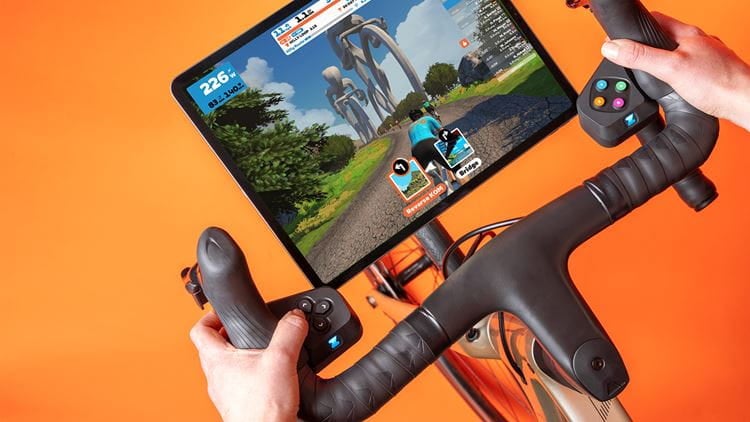Sports & fitness
Sports and Fitness was one of the first application areas to fully embrace connectivity.

Global online fitness platform, Zwift, has launched the first dedicated game controllers designed specifically for the popular Zwift at-home fitness application. The ‘Zwift Play’ controllers attach to a road bike’s drop handlebars using silicone straps. Once mounted, the wireless controllers allow riders to take full control of their in-game experience, removing the need for a keyboard and mouse to control braking, steering, and navigation functionality.
Zwift Play is powered by the integrated Nordic Semiconductor’s nRF52832 SoC’s 64 MHz, 32-bit Arm® Cortex® M4 processor with floating point unit (FPU), which provides ample computational resource to oversee the controllers. Using the Bluetooth® LE and ANT+ connectivity of the nRF52832 SoC’s 2.4 GHz multiprotocol radio, in-game control and navigation can be transmitted with low latency to the user’s device such as a PC, Mac, Android, iOS, or AppleTV, which all support the Zwift fitness platform. Zwift Play also connects wirelessly to an associated app via the Nordic SoC-enabled Bluetooth LE connectivity.

A directional pad on the left controller allows for seamless navigation of game menus and enables users to select turns while exploring Zwift’s virtual worlds. Shortcut buttons placed on the right controller are laid out in a familiar configuration allowing users to keep their eyes on the road. Buttons allow riders to make selections in menus, and when riding act as shortcuts that allow users to give ‘Ride Ons’, deploy ‘PowerUps’, skip workout blocks, and more. Both controllers also feature paddles that allow users to steer and brake.
“These extra functions, along with additional buttons, will unlock new possibilities to further develop the Zwift application, offering users a wider range of experiences,” explains Meir Machlin, VP of Engineering, Zwift.
Zwift Play uses a Li-Po 1400 mAh battery which is expected to deliver 20 hours of play under normal use. The Zwift platform also features a companion app that allows users to track progress, join clubs, and find events. The ‘Zwift Companion’ app will also be used to update firmware on Zwift Play – functionality made possible by the over-the-air device firmware update (OTA-DFU) capabilities of the Nordic SoC.
“We selected Nordic’s nRF52832 for Zwift Play due to the SoC’s combination of processing power, RF performance, generous memory, efficient power consumption, and Bluetooth LE/ANT+ multiprotocol support,” says Machlin.
“The SoC is also supported by the nRF Connect SDK [Software Development Kit], which we used as our baseline to implement our own application code above Bluetooth LE, and also provided basic functionalities including OTA-DFU, encryption, logging, and more.”
Zwift Play is available for purchase in the U.S., U.K., and EU.
Sports and Fitness was one of the first application areas to fully embrace connectivity.